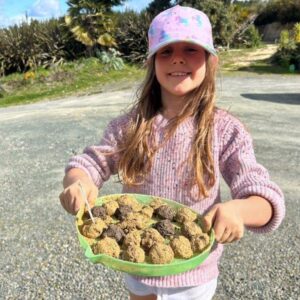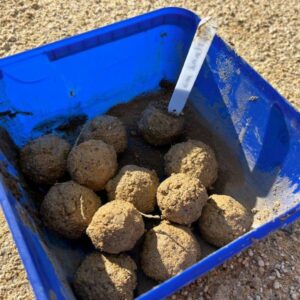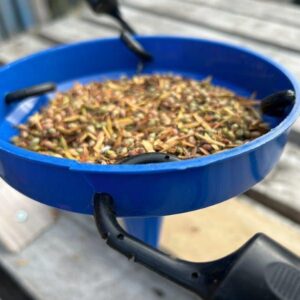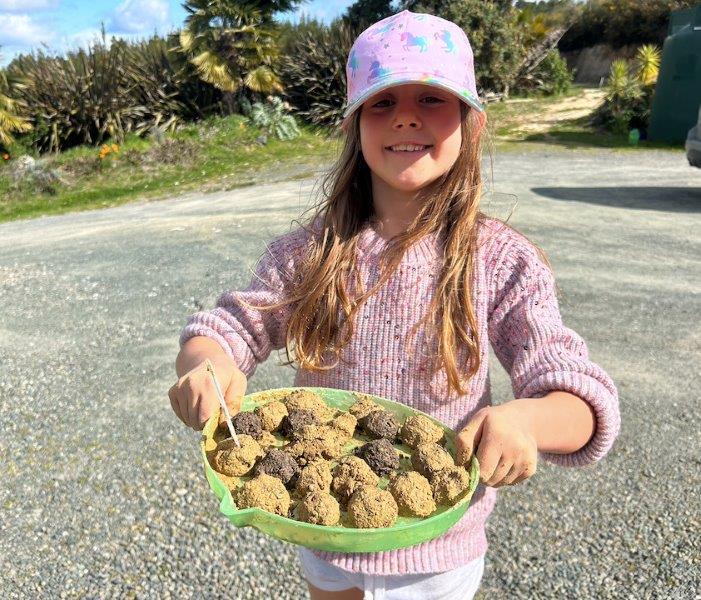Seed bomb fun!
Ollie Langridge, a member of the Biodiversity and Restoration Thematic Group, involves his children in his passion for native restoration and it seems to be rubbing off on them.
One of the latest activities is making and distributing seed bombs. These seed bombs pictured below have around 50-100 seeds which go in either wetland or dry hillsides. Seed bombs can be a really useful way of establishing plants without having to dig the soil. His daughter Anna pictured here loved rolling the seeds into muddy balls, ready for throwing (or launching via catapult) onto their restoration sites.
This is how they made these easy seed bombs: one third seeds, one third clay, one third sand.
Method:
Don’t overthink it! Mix by hand in wet materials, all sourced from the land (no purchases or tools necessary at all)
Shape handfuls of mixture in round balls about the size of a golf ball.
Allow 48 hours for your seed bombs to dry. Once dry they are ready to use!
Here’s a YouTube clip about how to make a seed bomb. Try it with your children!


How to distribute your seed
Here a few words from Ollie about distributing your seeds:
You can either use seed bombs, or directly seed areas. For more remote areas that are hard to reach, you might like to try a catapult system.


For this method to work, you’ve got to get lucky with how you design the trailer-mounted slingshot, as there’s a bit of physics involved with making sure all the bungie cords are equally tensioned and firing together.
After woofers built it initially we got lucky on the first few attempts, mounting the device onto a wooden pallet (free from Mitre 10) and then onto a trailer, so we could drive up and down the driveway firing seeds into the gullies which are so hard to get to here.
Then disaster struck – the blue funnel split, and I could never get it right again after that, it just kept firing incorrectly or self destructing. In the end I got frustrated and just walked around throwing seeds directly into bracken and gorse by hand, sometimes also with a fishing bait catapult… all part of the learning process.
You’ve also got to have a good reasonably heavy seed source, and lots of it.
I probably launched/threw around 6-8kgs of seeds and I aim to keep doing this every year. The three species I have tested is ti kouka, totara (in particular) and whauwhaupaku. In the past, totara has definitely worked and seedlings have sprouted.

